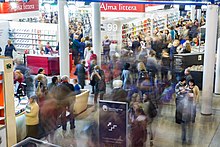
Vilnius is the capital of and largest city in Lithuania and the second-most populous city in the Baltic states. As of January 2024, Vilnius' estimated population was 602,430, and the Vilnius urban area which extends beyond the city limits had an estimated population of 708,627.
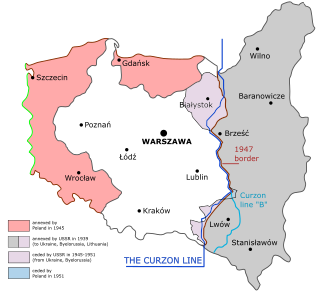
Eastern Borderlands or simply Borderlands was a term coined for the eastern part of the Second Polish Republic during the interwar period (1918–1939). Largely agricultural and extensively multi-ethnic with a Polish minority, it amounted to nearly half of the territory of interwar Poland. Historically situated in the eastern Polish–Lithuanian Commonwealth, following the 18th-century foreign partitions it was divided between the Empires of Russia and Austria-Hungary, and ceded to Poland in 1921 after the Treaty of Riga. As a result of the post-World War II border changes, all of the territory was ceded to the USSR, and none of it is in modern Poland.

Lithuanian book smugglers or Lithuanian book carriers smuggled Lithuanian language books printed in the Latin alphabet into Lithuanian-speaking areas of the Russian Empire, defying a ban on such materials in force from 1864 to 1904. In Lithuanian knygnešys literally means "the one who carries books". Opposing imperial Russian authorities' efforts to replace the traditional Latin orthography with Cyrillic, and transporting printed matter from as far away as the United States to do so, the book smugglers became a symbol of Lithuanians' resistance to Russification.

Šalčininkai District Municipality is one of 60 district municipalities in Lithuania. The municipality is part of the Vilnius County and is located in southeastern Lithuania, next to the Belarus–Lithuania border. The south-eastern border of the municipality with Belarus includes a distinctive salient of Lithuanian territory, known as the Dieveniškės appendix, almost completely surrounded by Belarus.

The Vilna Ghetto was a World War II Jewish ghetto established and operated by Nazi Germany in the city of Vilnius in the modern country of Lithuania, at the time part of the Nazi-administered Reichskommissariat Ostland.

Lithuanian literature concerns the art of written works created by Lithuanians throughout their history.
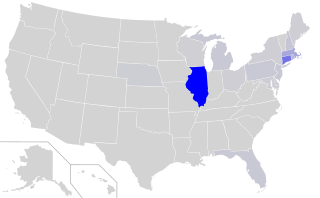
Lithuanian Americans refers to American citizens and residents who are Lithuanian and were born in Lithuania, or are of Lithuanian descent. New Philadelphia, Pennsylvania has the largest percentage of Lithuanian Americans (20.8%) in its population in the United States. Lithuanian Americans form by far the largest group within the Lithuanian diaspora.

The Vilnius Castle Complex is a group of cultural, and historic structures on the left bank of the Neris River, near its confluence with the Vilnia River, in Vilnius, Lithuania. The buildings, which evolved between the 10th and 18th centuries, were one of Lithuania's major defensive structures.
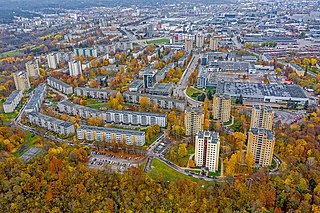
Žirmūnai is the most populous administrative division (elderate) in Vilnius. It is also a neighbourhood in the Lithuanian capital city Vilnius, encompassing the city district of the same name, built in the 1960s.

Antakalnis is an eldership in Vilnius, Lithuania. Antakalnis is one of the oldest, and largest historical suburbs of Vilnius. It is in the Eastern section of Vilnius, along the left bank of the Neris, with the river running along the whole Western side of the district. Antakalnis Eldership is the second-largest in Vilnius, with an area of 77.14 km2 (29.78 sq mi).

Mykolas Romeris University is an international university located with campuses in Vilnius and Kaunas, Lithuania.

The Poles in Lithuania, also called Lithuanian Poles, estimated at 183,000 people in the Lithuanian census of 2021 or 6.5% of Lithuania's total population, are the country's largest ethnic minority.
Vidmantas Jusionis is a Lithuanian painter.
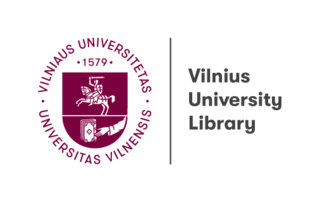
Vilnius University Library or VU Library is the oldest and one of the largest academic libraries of Lithuania. It was founded in 1570 by the Jesuits and as such is nine years older than Vilnius University. VU Library holds 5.4 million documents on shelves measuring 166 kilometres (103 mi) in length. The holdings, accessible to members of the university and wider public, include some of the oldest manuscripts, incunabula and engravings in Lithuania and Eastern Europe. At present the library has 36 thousand users.

Pilies Street is one of the main streets in the Old Town of Vilnius, the capital of Lithuania. It is a rather short street, running from Cathedral Square to the Town Hall Square.
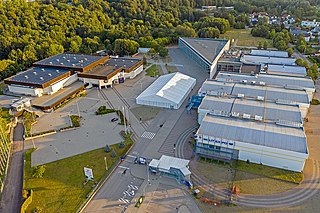
LITEXPO or Lithuanian Exhibition and Congress Centre is the largest exhibition centre in the Baltic states located in Vilnius, Lithuania.

Vytenis Jankūnas is a Lithuanian-American artist living and working in New York City. His work consists of photographs, paintings and mixed media works.

The Lithuanian Art Society was a society that organized Lithuanian art exhibitions and supported Lithuanian artists. Based in Vilnius, it was active from 1907 to the outbreak of World War I in 1914. It was chaired by painter Antanas Žmuidzinavičius. The society was established after the first Lithuanian art exhibition was successfully organized in early 1907. The society continued to organize annual exhibitions that displayed works both by professional and folk artists. Influenced by the Arts and Crafts movement, the society paid great attention to Lithuanian folk art which was increasingly seen as an expression of the Lithuanian character. In 1912, the society published an album of drawings of Lithuanian crosses, column shrines, and roofed poles, which is considered the first study of Lithuanian folk art. The society was also instrumental in preserving the art of Mikalojus Konstantinas Čiurlionis and organized his first solo exhibitions in 1911 and 1913. The society also collected works by other artists and worked with the Lithuanian Scientific Society to establish a Lithuanian art museum. The collection was transferred to the present-day M. K. Čiurlionis National Art Museum in 1920.
The Lithuanian Mutual Aid Society of Vilnius was a mutual aid and cultural society active in Vilnius, then part of the Russian Empire, from 1904 to 1915. It originated from the illegal social club known as the Twelve Apostles of Vilnius which formed around 1895. The society was an integral part of establishing Vilnius as the cultural center of the Lithuanian National Revival.
